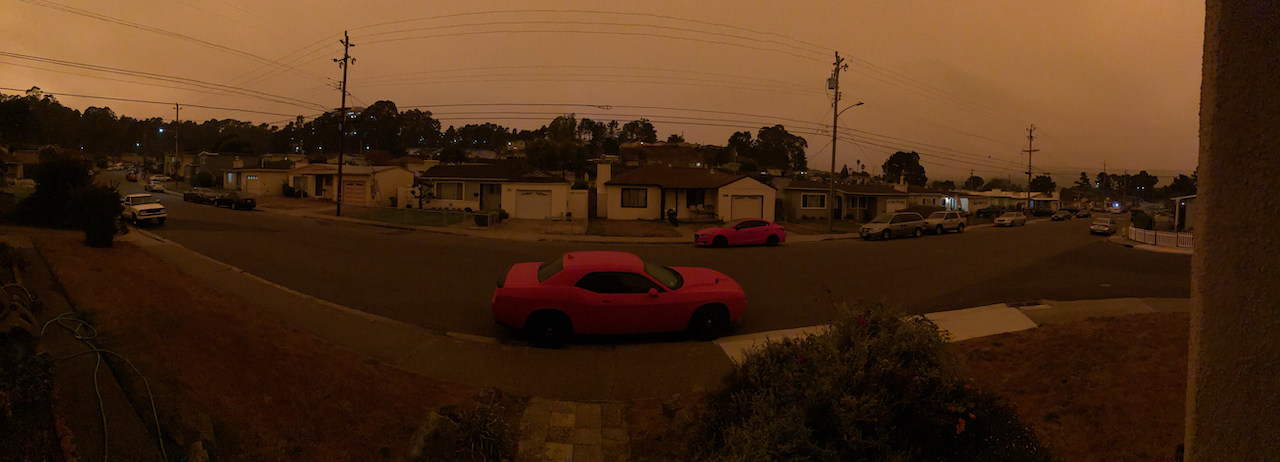The lengthy, yet just beginning wildfire season in California this year is already exhausting. Starting with the random dry lightning strikes sparking a trio of the largest wildfires our state has experienced on record, it has been one crisis after the next, with weather events exacerbating the conditions for additional flames and smoke which historically wouldn’t subside until Thanksgiving if not beyond. It’s been a statewide emergency for close to a month already, and as of early September has engulfed the entire west coast of the United States while the smoke itself has blown across much of the continental US.
The San Francisco Bay Area, where I live, has been impacted with record-setting consecutive days of terrible air quality—some of the worst in the world. It’s sad commentary that between sheltering in place for half of 2020 and previous years of wildfires, we have gotten used to staying indoors for weeks at a time; heading outside masked up with the persistent whiff of burnt nature in the air; clearing the thin layers of ash on cars and other outside surfaces; impulsively checking air quality apps and desperately hoping for rain. Our kids have started repeating—and thus internalizing—our explanations of COVID and wildfires on why they can’t play in the neighborhood park like they used to be able to.
The damage and disruption of climate change are now hard to deny, as visceral as the effects are to our state and populace. As opposed to our neighbors in Oregon who frame this as a “once in a generation” confluence of disastrous events, California—with our newfound wisdom accumulated from these recent years of extreme firefighting—has already accepted that this is the new normal. That said, it’s worrying that even with this admission, there doesn’t seem to be much of an overarching strategy of controlling these fires1, and so efforts feel increasingly reactive and desperate2.
But even with best effort, we are unlikely to go back to the times when wildfires were an abstract concern for the state’s metropolitans instead of real annual threats to health and livelihood. COVID—that harbinger of the future forced onto the present—seems to have accelerated the rate of departures from the state, accelerating the trends that were already in place with our high costs of living. Wildfires, then, may very well be another catalyst; the idyllic Californian year-round weather becomes a lot less idyllic when every summer brings with it anxiety for the wildfire season, destruction and pollution and widespread power outages with knock-on long-term problems around water quality and smoke inhalation. Then there’s the fact that a warmer planet will only further dry out our state, and mild desert-like climate may eventually evolve into something closer to Baja California weather or hotter.
So, for as much as California became one of the richest states in the richest country in the world due to its weather and natural resources3—eventually leading to thriving tech and entertainment industries—it may be undone, at least partially, by larger climate forces that it cannot mitigate. With enough departures, there will be pressure on housing prices, which will affect the state’s tax revenues, which then impact public services and the quality of life, driving additional migration and completing the negative flywheel effect.
To be clear, this is a pretty crappy outcome for everyone, and it’s not a prediction I’d want to come to pass! Certainly our state recognizes a potentially bleak future for itself, and we have passed laws pushing for everything from mandatory solar panels to tighter EV and fuel economy requirements to try to contain the effects of climate change. I think we’ll have no choice but to quickly lead the effort to figure out how to contain and minimize wildfires; the question is whether it’s already too late.
Some have pointed out that potentially long-term legislative fixes are stymied by poor timing on CA’s governance schedules, and plans die in part because they run out of time for debate before lawmakers adjourn.↩
Though giving credit where it’s due, I recently listened to a podcast that talked about an initiative to partner with native tribes in reviving their practices of cultural burning.↩
San Francisco was originally a mining town; Los Angeles was an oilfield.↩


